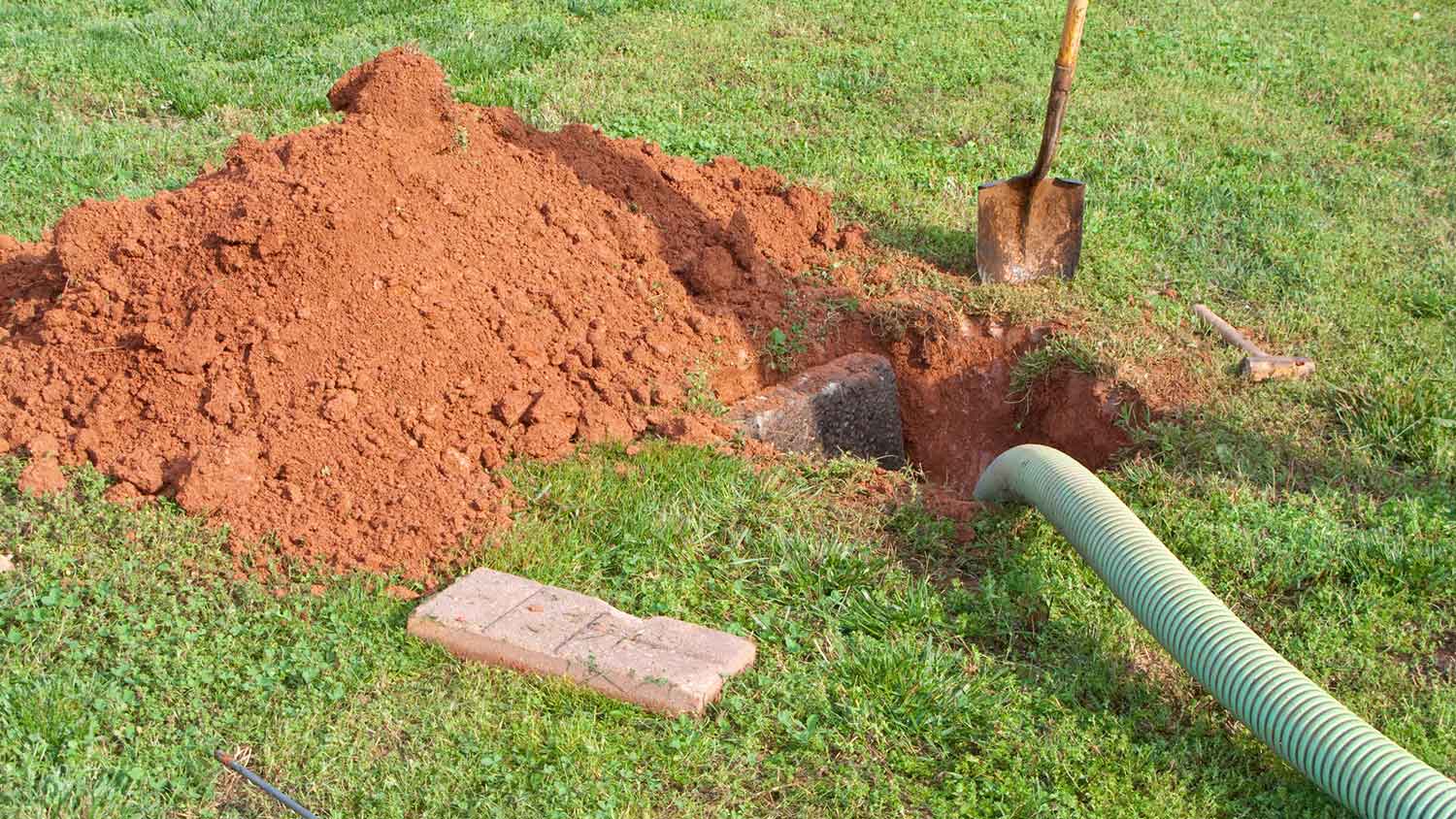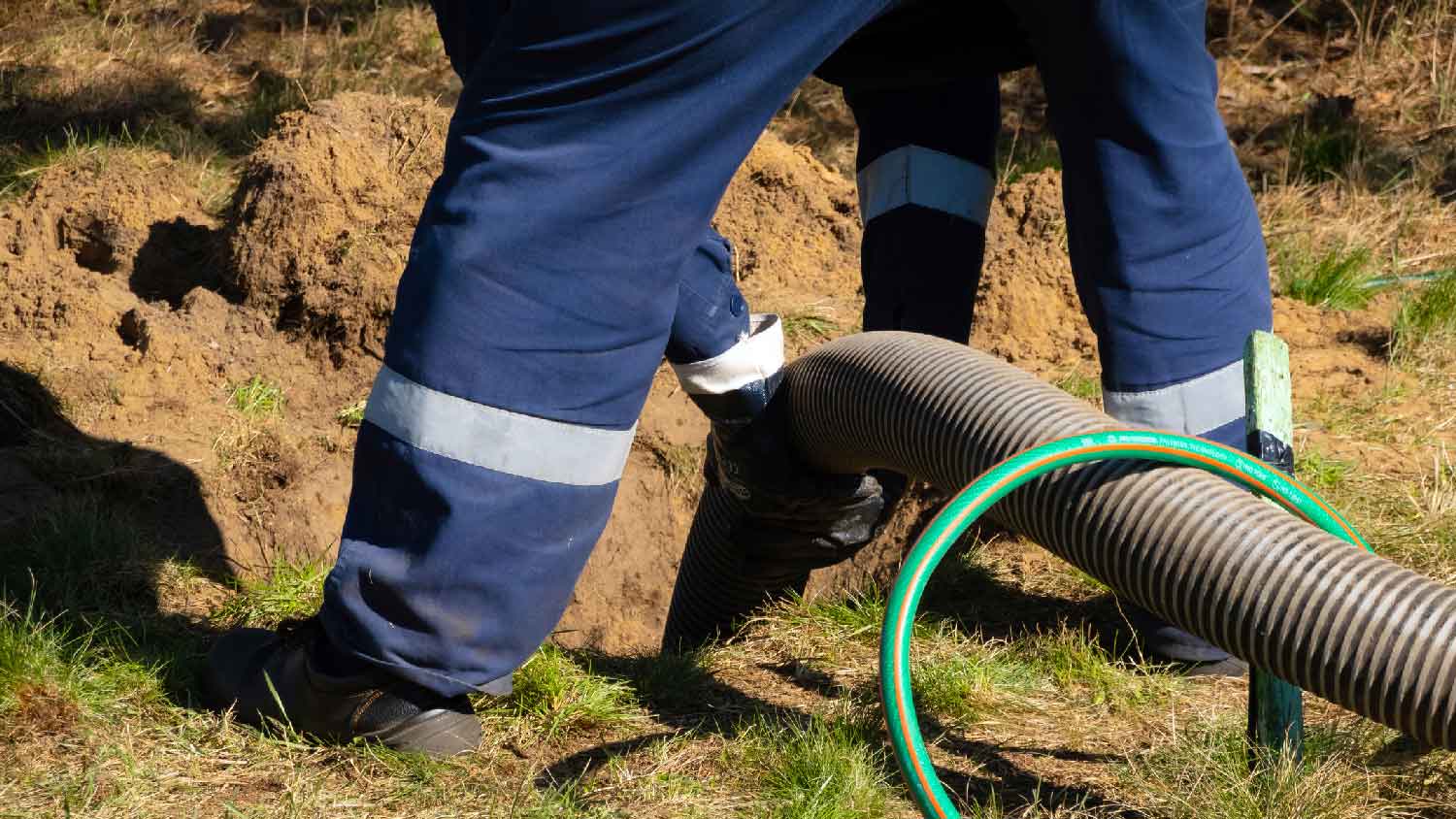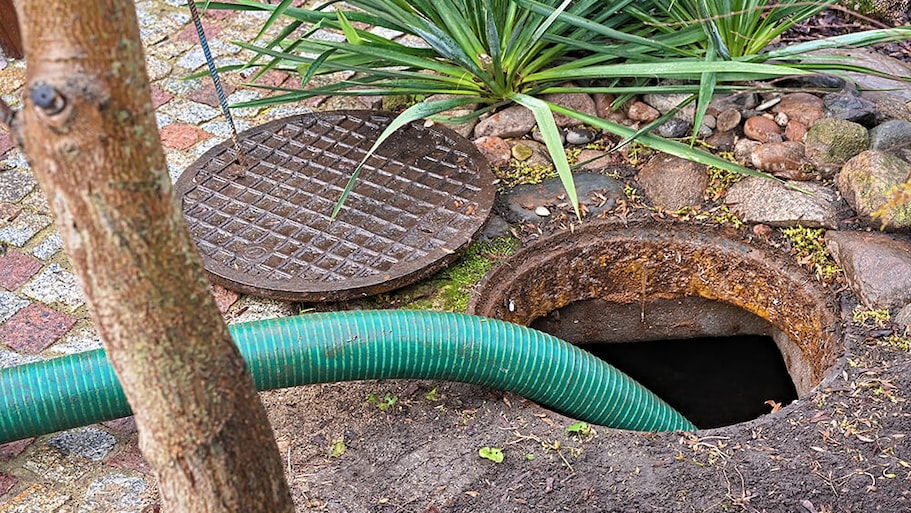How Much Does It Cost to Clean Septic Field Lines? [2025 Data]
The average cost for a septic line cleaning ranges from $600 to $1,100, with a national average of $900. Multiple factors influence what your septic pro will charge, such as the depth and number of lines and their general state.


The average cost to clean septic field lines is $900, though homeowners can spend between $350 and $1,900. Septic tanks are an extremely important part of a house, especially in rural areas, and need to function well to be effective. Septic problems are, well, not pretty. That's why having a pro regularly clean your septic field lines to avoid buildup, overflow, or damage is a must. Learn all the factors that impact what you'll pay to have these field lines thoroughly cleaned out.
Cleaning Septic Field Line Cost Factors
Most septic systems are built similarly, the only differences being the type of material the lines are made out of, how they’re laid out for drainage (called leaching), and where the other parts of the system are located. While there are different types of systems, they all tend to work the same way—wastewater is channeled from the house to the tank and then distributed through pipes into a drainage field.
Types
There are several different septic systems, some more complicated than others. The two most common types, aerobic and chamber, are simple systems in which field lines splay out from the septic tank, leading effluent to a drainage field.
More complicated systems, like recirculating sand filtration systems and constructed wetland systems, are more expensive to set up and clean. However, as long as your septic lines are easily locatable and accessible, pricing between the different system types shouldn’t be too drastic.
| Type of System | Average Cost |
|---|---|
| Anaerobic | $450–$1,050 |
| Aerobic | $500–$1,200 |
| Chamber | $400–$1,300 |
| Drip | $700–$1,400 |
| Mound | $650–$1,250 |
| Recirculating | $900–$1,900 |
| Evapotranspiration | $700–$1,500 |
| Constructed wetland | $600–$1,300 |
"Effluent" is the term for liquid waste or sewage that has been treated in a septic tank or sewage treatment plant. You may also know it as "wastewater."
Size
Larger houses will have larger septic systems. That being said, the size of your house, even if the septic tank itself is larger, shouldn’t have much of an effect on the project cost. What matters much more is the number of lines that need to be cleaned. Most systems will have one to three septic field lines that release wastewater into a drain field.
| Number of Lines | Average Cost |
|---|---|
| 1 | $450–$1,000 |
| 2 | $500–$1,200 |
| 3 | $600–$1,400 |
| 4 | $750–$1,500 |
| 5 | $800–$1,600 |
Materials
Almost all modern drainage systems use PVC for leaching wastewater. It’s inexpensive, extremely resistant to decay, and easily carries liquid. PVC is also resistant to damage during the cleaning process, making it all the more attractive for septic systems. A seemingly random PVC pipe coming up from the ground in your yard is usually an access point for the field lines.
Labor
Cleaning septic lines isn’t a job that takes more than a few hours. Expect to pay a pro around the same rate you’d pay for septic tank repair costs—around $125 per hour. Expect to pay more if cleaning your system requires special tools or materials.
Prep
The only prep work you can do for this project is to make sure the septic system is easy to access. This could prove difficult if your system is backed up or clogged and your yard is waterlogged. You can cut your grass if it’s too high to work through.
Location
Most septic tanks will be near the house, with a distribution box far away and the leach field further still. The location should only factor into the cost if your house is on a steep hill or the pro needs to navigate through a flooded yard. In most cases, location won’t play much of a role in the total cost.
Septic Field Line Cleaning Ongoing Costs

Septic tank ongoing costs are something to consider when you buy a house with a septic tank. If you already have one, you may be familiar with some of these costs already. Some ways to reduce additional costs to your system are:
Septic tank pumping every three to five years.
Reducing the flow of wastewater.
Only flushing appropriate items.
Respect the drain field—no driving, heavy items, trees, sheds, etc.
Cleaning Septic Field Lines Yourself or Hiring a Pro
You should talk to a septic tank pro near you for this job—it isn’t DIY friendly for many reasons. Firstly, damage to the system could potentially impact your entire yard, even your foundation. Secondly, professionals use a high-pressure hydrojet system to clean the lines—something you won’t have. Finally, performing DIY work on your septic system could void any active warranties.
Because this isn’t a time-consuming job, you wouldn’t save much on hourly costs either. All things considered, there are plenty of other home improvement DIY jobs you can tackle if you want to get your hands dirty.
Tips to Reduce Cost While Cleaning Septic Field Lines

You can’t affect the pricing of the pro much here. There simply aren’t enough hours to negotiate on, and their equipment is expensive to purchase. Septic cleaning companies are worth every cent they cost due to them keeping a major part of your home running as it should.
If there is any way to lower costs, it’s by making it easier for the pro to locate and access the different parts of your system. Make sure you know where the lines are, where the drain field is, where the above-ground access points are, and where the distribution box is.
Frequently Asked Questions
The depth of a septic tank’s drain lines is between 18 and 36 inches underground. These pipes are filled with perforations and surrounded by sand, gravel, or a combination of both, as both materials help filter wastewater. While some pipes are buried closer to the surface, this can create problems unless the soil is compact and doesn’t shift much.
Saving money on property taxes and having direct control over your waste system are both pros when buying a house with a septic tank. However, it’s easier on the house and the yard if a home can be hooked up to a municipal system, which is why septic tanks are best for homes where that isn’t an option. Expensive repairs, potential odor issues, and regular maintenance are all cons of septic systems.
Most homeowners know there’s a septic system problem when they can smell one. However, this isn’t exactly a scientific deduction method. Consider some of the other signs: standing water or constantly damp earth in the drainage area, toilets and sinks that won’t drain or frequently back up, and loud plumbing. You really need to be on top of routine maintenance with septic systems in order to avoid such unpleasant symptoms of a septic issue.
















